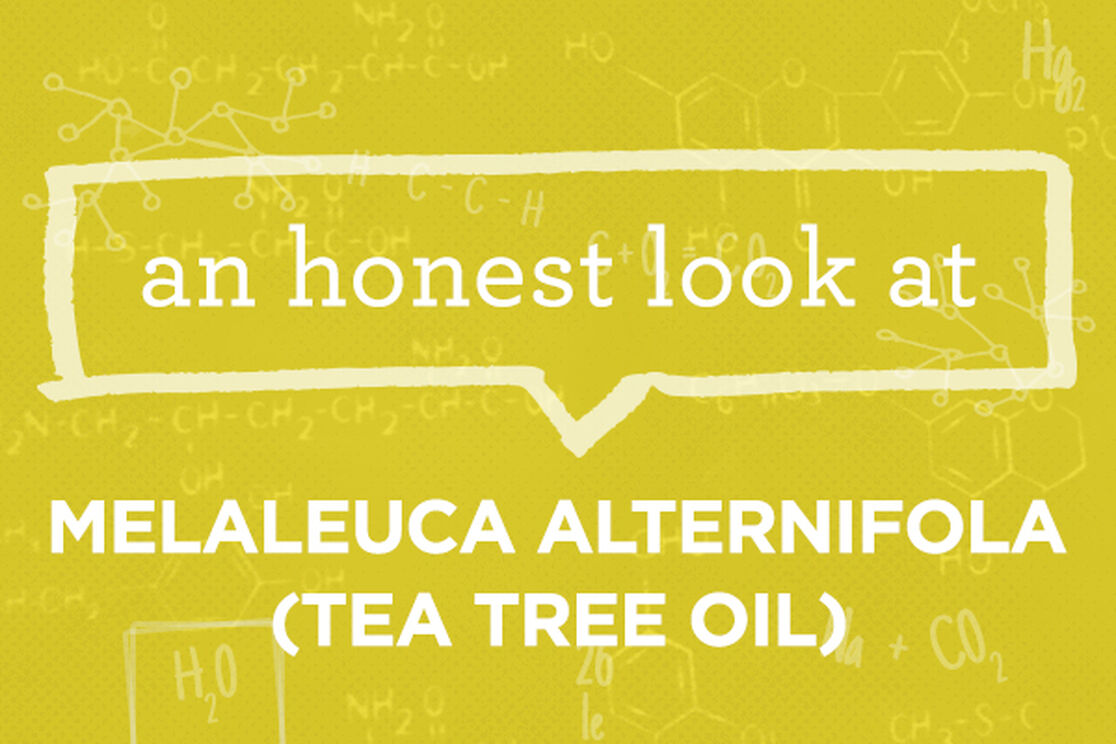This is part of our ongoing series to help consumers better understand chemicals, chemistry, and product formulations. We translate the science, bust the myths, and give you an honest assessment, so you can make informed choices for your family!
Ingredient:
Melaleuca Alternifola (Tea Tree) Oil
What it is:
This aromatic oil comes from the leaves of the Melaleuca alternifolia, a tree native to Australia.
What it does:
Melaleuca alternifolia oil is truly old school and has been known for centuries. Indigenous Australians first used the plant to treat wounds and minor respiratory ailments. British explorer Captain Cook coined the name “tea tree” in the 1770s when he saw the local natives making tea from the leaves. By the 1920s, physicians were using the oil to clean wounds and prevent post-surgery infections--according to the American Cancer Society, tea tree oil was even included in the first-aid kits given to all Australian soldiers and sailors during World War II. Anecdotal evidence and preliminary research also suggest that tea tree oil could be an immuno-stimulant, beneficial for treating acne, warts, athlete’s foot, dandruff, and more.
Why we use it:
Tea tree oil is the total package--we love gifts from nature that are effective, easy to source, and take relatively little effort to process into a raw ingredient for commercial use. Melaleuca alternifola oil is a completely natural, renewable resource. As one of the first to embrace the stringent requirements of the ISO14000 environmental standards, the Australian tea tree industry is known as one of the most environmentally aware in the world. With so much to offer, we use tea tree oil wherever and whenever we can! You’ll find it in our household products, like the Bathroom and Toilet Cleaners, as well as our personal care products, like our Chest Rub and Shave Oil.
Why we’re featuring it today:
Tea tree oil made headlines when a study found a possible association between the topical use of products containing tea tree or lavender oil and prepubescent breast growth in boys. Closer reading has shown that it’s not nearly as worrisome as the media coverage has made it out to be:
- In the limited subject sample (3-4 cases in one geographic area), most of the usage was focused on wash-off products such as soap and shampoo.
- The rate of dermal absorption--entering the body through the skin--is exceedingly low for these products; it’s even more minimal when you consider the concentration of essential oils in typical commercial products (particularly as fragrance).
- Since all of the cases were reported from one Colorado-based clinic, the presence of other possible environmental causes, such as estrogen and hormone disruptors, could also be a factor, but they weren’t included in the study.
- Follow-up testing has not revealed significant findings that bolster the results of this study. (For a more detailed response from an essential oil authority, click here.)
Ultimately, these oils have been used topically for centuries with no other reports of this type of reaction. We’re confident in the safety of these oils, especially at the concentration levels we use in our formulas. (Essential oils that haven’t been diluted can indeed be dangerous.)
Still have questions about tea tree oil? Let us know in the comments. We’re always happy to help!
References:
- Bassett IB, Pannowitz DL, Barnetson RS. A comparative study of tea-tree oil versus benzoyl peroxide in the treatment of acne. Med J Aust 1990;153(8):455-458.
- Budhiraja, S. S., Cullum, M. E., Sioutis, S. S., Evangelista, L., & Habanova, S. T. (1999). Biological activity of Melaleuca alternifolia oil component, terpinen-4-ol, in human myelocytic cell line HL-60. Journal of manipulative and physiological therapeutics, 22(7), 447-453.
- Caldefie‐Chézet, F., Fusillier, C., Jarde, T., Laroye, H., Damez, M., Vasson, M. P., & Guillot, J. (2006). Potential anti‐inflammatory effects of Melaleuca alternifolia essential oil on human peripheral blood leukocytes. Phytotherapy Research, 20(5), 364-370.
- Cox, S. D., Mann, C., Markham, J. L., Bell, H. C., Gustafson, J. E., Warmington, J. R., Wyllie, S. G. - The mode of antimicrobial action of essential oil of Melaleuca alternifola (tea tree oil) - J. Appl. Microbiol., 2000, 88, 170-175.
- Koh KJ, Pearce AL, Marshman G, et al. Tea tree oil reduces histamine-induced skin inflammation.Br J Dermatol 2002;147(6):1212-1217.
- Li, Y., Fabiano-Tixier, A., & Chemat, F. (n.d.). Essential oils as reagents in green chemistry.
- Prensner R. Does 5% tea tree oil shampoo reduce dandruff? J Fam Pract 2003;52(4):285-286.
This post was revised as of 4/26/2016.
We aim to provide you with the most honest and credible information possible. This article was reviewed for accuracy by The Honest Team and was written based on sources that are linked at the bottom of the article.
blog_review_statement



